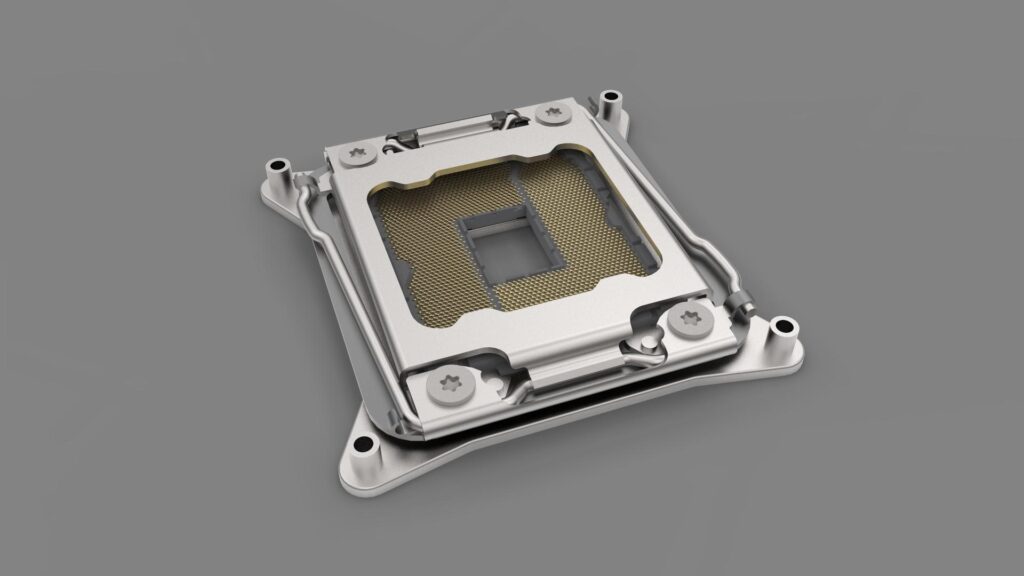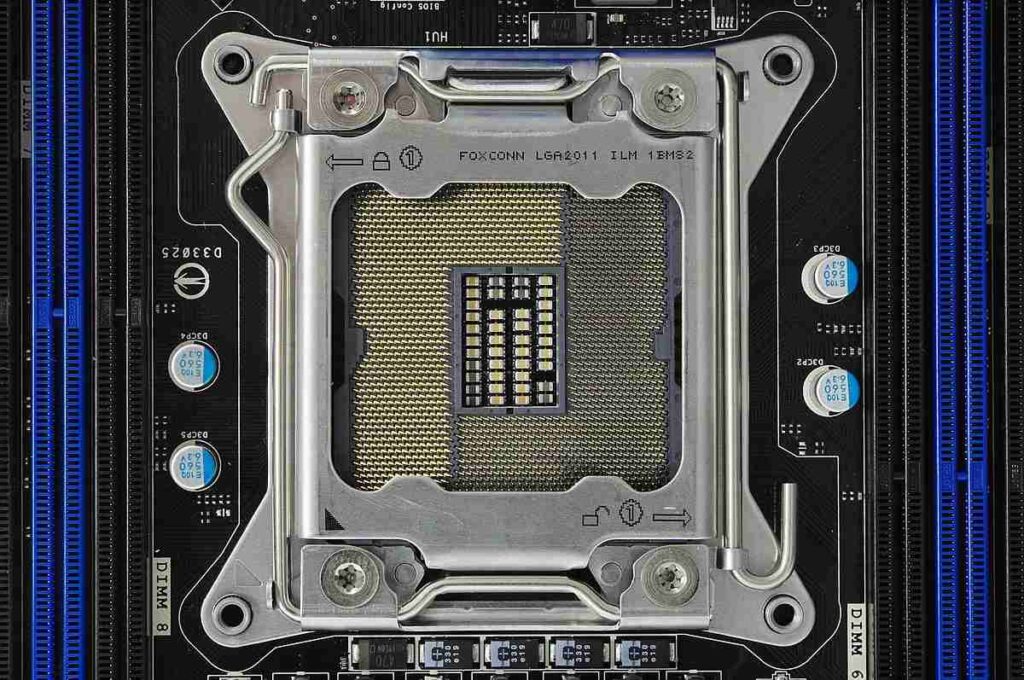When building a powerful, high-performance desktop, selecting the right processor is crucial for maximizing performance, whether you’re gaming, creating content, or handling demanding workloads. The LGA 2011-3 socket, which supports Intel’s Haswell-E and Broadwell-E processors, is designed for enthusiasts and professionals who need maximum processing power for multitasking, gaming, and content creation.
“The LGA 2011-3 socket supports Intel’s Haswell-E and Broadwell-E processors, designed for high-end desktop systems. Popular CPUs for this socket include the Intel Core i7-6900K, i7-6800K, and i7-6850K, as well as the Intel Core i7-5960X.”
In this article, We Will discuss “ lga 2011-3 cpu list”.
Table of Contents
What is LGA 2011-3:

The LGA 2011-3 socket is part of Intel’s X99 chipset family, designed for high-end desktop (HEDT) systems. It supports Intel’s Haswell-E and Broadwell-E processors, offering up to 10 cores and 20 threads in some models. Unlike standard desktop CPUs, LGA 2011-3 processors provide superior multi-core performance, making them perfect for applications that demand substantial processing power such as gaming, 3D rendering, video editing, and running virtual machines.
These processors are generally equipped with a higher cache size and thermal design power (TDP) compared to mainstream processors, meaning they can handle more data at once but also require better cooling solutions.
LGA 2011-3 CPUs are the go-to choice for users who prioritize performance over energy efficiency, as they deliver excellent computational capabilities. Whether you need to run intensive workloads or simply want a future-proof gaming rig, these CPUs are built to handle the most demanding tasks.
Top LGA 2011-3 CPUs: Performance and Features
Here is a list of the top LGA 2011-3 CPUs, highlighting their performance, features, and ideal use cases:
Intel Core i7-6950X:
- Cores/Threads: 10/20
- Base Clock: 3.0 GHz
- Boost Clock: 3.5 GHz
- Cache: 25MB
TDP: 140W
The Intel Core i7-6950X is the flagship model of the LGA 2011-3 socket and one of the most powerful consumer CPUs available. With 10 cores and 20 threads, it offers exceptional multi-core performance, making it perfect for users who require heavy multitasking capabilities, like 3D rendering, video production, and scientific simulations.
This processor also delivers excellent single-threaded performance, ensuring smooth gameplay for high-end gaming at 4K and beyond. The 6950X’s massive 25MB cache helps in improving memory bandwidth, and its 140W TDP ensures stable, consistent performance.
For professionals and extreme enthusiasts who need maximum performance, the i7-6950X is hard to beat. However, it comes with a premium price tag, so it’s most suited for those who need the extra cores for productivity applications rather than gaming alone.
Also Read: Is Cs2 GPU Or CPU Intensive – Understanding Hardware Needs For Optimal Performance!
Intel Core i7-6900K:
- Cores/Threads: 8/16
- Base Clock: 3.2 GHz
- Boost Clock: 3.7 GHz
- Cache: 20MB
- TDP: 140W
The Intel Core i7-6900K is an excellent option for users who want high-end performance without opting for the extreme pricing of the i7-6950X. With 8 cores and 16 threads, the 6900K strikes a perfect balance between gaming and multitasking, providing excellent performance in both. Its clock speeds are slightly higher than the 6950X, making it more suitable for users who prioritize gaming but still need strong performance in multi-threaded workloads.
This processor is ideal for gamers who want to run demanding games and multitask without compromising frame rates. Its strong performance in both single and multi-threaded applications ensures that it will remain relevant for years to come, especially if paired with a high-end GPU.
Intel Core i7-6850K:
- Cores/Thread: 6/12
- Base Clock: 3.6 GHz
- Boost Clock: 3.8 GHz
- Cache: 15MB
- TDP: 140W
The i7-6850K is the best choice for those looking for a mid-range LGA 2011-3 processor. With 6 cores and 12 threads, it offers great multi-core performance without breaking the bank. Its base clock of 3.6 GHz and boost clock of 3.8 GHz make it a capable performer in both single and multi-threaded tasks. This processor is particularly useful for gaming setups, where gaming performance is a priority but you still want strong multi-tasking abilities for streaming or video editing.
For most users, the i7-6850K offers plenty of performance for gaming, streaming, and even content creation, making it an excellent balance between price and performance.
Intel Core i7-6800K:
- Cores/Threads: 6/12
- Base Clock: 3.4 GHz
- Boost Clock: 3.6 GHz
- Cache: 15MB
- TDP: 140W
Similar to the i7-6850K but slightly more affordable, the Intel Core i7-6800K offers 6 cores and 12 threads with a slightly lower base clock. However, its boost clock of 3.6 GHz ensures that performance remains fast in most tasks.
This processor is great for gamers on a budget who also want strong multi-core performance for content creation or running multiple applications simultaneously. Its performance is nearly identical to the 6850K, but its price point makes it a good alternative if you’re looking to save money.
Intel Core i7-5960X:
- Cores/Threads: 8/16
- Base Clock: 3.0 GHz
- Boost Clock: 3.5 GHz
- Cache: 20MB
- TDP: 140W
While a bit older, the Intel Core i7-5960X is still a powerhouse for any enthusiast build. With 8 cores and 16 threads, it offers robust performance for multi-threaded applications and gaming at high resolutions. Its base and boost clock speeds are slightly lower than newer models, but it still competes strongly in most tasks.
This CPU is perfect for those who are building a high-end workstation or gaming PC but don’t want to spend as much as newer processors demand.
Though it’s no longer Intel’s latest offering, the i7-5960X remains a solid choice for those who want reliable, powerful performance without investing in the most recent models.
Intel Core i5-6680XE:
- Cores/Threads: 8/16
- Base Clock: 3.6 GHz
- Boost Clock: 4.0 GHz
- Cache: 16MB
- TDP: 140W
The Intel Core i5-6680XE offers a more affordable option for those looking to benefit from the LGA 2011-3 socket but don’t need the extreme performance of an i7 processor. With 8 cores and 16 threads, this CPU is capable of handling most workloads, including gaming, video editing, and rendering. The boost clock of 4.0 GHz allows for great performance in single-threaded applications as well.
For those on a budget who want strong multi-core performance without the i7 price tag, the i5-6680XE is a great option. It’s perfect for users who want an LGA 2011-3 build but don’t need the highest-end CPU available.
Choosing the Right LGA 2011-3 CPU for Your Needs:

The LGA 2011-3 socket provides a range of CPUs with varying performance levels. Here are a few key points to consider when choosing the right one for your needs:
Performance Requirements:
If you are focused primarily on gaming, you might be better off opting for a processor with fewer cores but higher clock speeds. However, if you’re working with professional applications like video editing, 3D rendering, or scientific simulations, a processor with more cores (like the i7-6950X) will better suit your needs. Ultimately, the choice depends on balancing your performance needs with the type of tasks you prioritize.
Budget:
The price of LGA 2011-3 CPUs can vary significantly. While the i7-6950X is the top performer, it comes with a hefty price tag. If your budget is more constrained, consider the i7-6800K or i5-6680XE, which still provide solid performance but at a lower cost. It’s important to find a balance between performance and cost to get the most value out of your purchase.
Also Read: How To Ship A CPU With A Static Bag – The Ultimate Guide!
Cooling:
LGA 2011-3 processors, especially the higher-end models, have a higher TDP, meaning they produce more heat. Ensure that you have an adequate cooling solution, such as a high-performance air cooler or an AIO liquid cooler, to keep temperatures in check. Proper cooling is essential to maintain stable performance and prevent thermal throttling during demanding tasks.
Future-Proofing:
Choosing a processor with more cores ensures that your system will remain capable of handling demanding applications in the future. If you plan to upgrade or use your system for many years, investing in a high-core processor like the i7-6950X or i7-6900K can extend the lifespan of your build. A future-proof CPU helps ensure your system can handle evolving software and workloads without needing frequent upgrades.
FAQ’s
Here’s the updated version with a 1-line addition:
1. What is LGA 2011-3?
LGA 2011-3 is a high-end CPU socket supporting Intel’s Haswell-E and Broadwell-E processors, designed for performance-intensive tasks.
2. Which are the best CPUs for LGA 2011-3?
Top LGA 2011-3 CPUs include the i7-6950X, i7-6900K, and i7-6850K, offering excellent multi-core performance.
3. Can I use LGA 2011-3 CPUs for gaming?
Yes, they provide great gaming performance, especially for high-resolution gaming and multitasking.
4. Is the i7-6950X the best LGA 2011-3 processor?
The i7-6950X is powerful but expensive; i7-6900K is a great alternative for gaming and content creation.
5. What is the TDP of LGA 2011-3 processors?
LGA 2011-3 processors have a TDP of around 140W, requiring strong cooling to maintain optimal performance.
Conclusion
In conclusion, LGA 2011-3 processors, such as the i7-6950X and i7-6900K, offer powerful multi-core performance for demanding tasks like gaming, content creation, and rendering. While the i7-6950X is the most powerful, it’s often overkill for most users, with the i7-6900K being a more balanced option. These CPUs provide excellent performance, but make sure to pair them with adequate cooling and the right motherboard for the best results.

